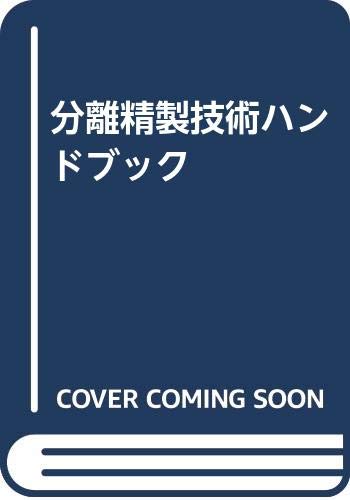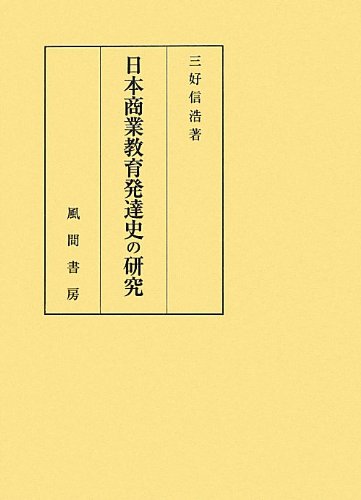1 0 0 0 自動車用安全部品とエネルギー物質
- 著者
- 新井 充
- 出版者
- 一般社団法人 日本燃焼学会
- 雑誌
- 日本燃焼学会誌 (ISSN:13471864)
- 巻号頁・発行日
- vol.50, no.152, pp.107-110, 2008
1 0 0 0 アジ化ナトリウム集団中毒症例の検討
- 著者
- 広瀬 保夫 畑 耕治郎 本多 拓 山崎 芳彦 堀 寧 大関 暢
- 出版者
- 一般社団法人 日本救急医学会
- 雑誌
- 日本救急医学会雑誌 (ISSN:0915924X)
- 巻号頁・発行日
- vol.12, no.3, pp.125-129, 2001
- 被引用文献数
- 3
This report describes 7 victims of sodium azide poisoning caused by drinking poisoned water. Ten employees at the poisoning site developed symptoms immediately after ingesting coffee or tea made from hot water contained in a thermos bottle. Symptoms included altered consciousness, faintness, blackout, palpitation, nausea, and paresthesia of both hands and feet. Seven patients were transferred to our institution by ambulance. We assumed symptoms were caused by acute poisoning but the causative agent was unknown. We could not rule out cyanide poisoning because of the rapid emergence of symptoms suggesting circulatory failure, so we administered amyl nitrate, sodium nitrate, and sodium thiosulfate. Symptoms rapidly subsided. The causative agent was identified the next day as sodium azide. While the victims were being treated at the emergency room, 2 doctors, 3 nurses, and 1 pharmacist complained of faintness, headache, nausea, sensations of dyspnea and eye pain. These medical staff members had all either conducted gastric lavage or treated gastric contents. This strongly suggests that symptoms were caused by hydrazoic acid formed in a chemical reaction between sodium azide and gastric acid. Our experience underscores the potential hazard from hydrazoic acid faced by medical staff treating patients with oral sodium azide intoxication.
1 0 0 0 アジ化ナトリウムの生体影響と事故例
- 著者
- 千葉 百子 大道 正義 稲葉 裕
- 出版者
- 一般社団法人日本衛生学会
- 雑誌
- 日本衞生學雜誌 (ISSN:00215082)
- 巻号頁・発行日
- vol.53, no.4, pp.572-579, 1999-01-15
- 参考文献数
- 18
- 被引用文献数
- 10
This report reviews the biological effects and case reports of suicidal or accidental ingestion of, and occupational exposure to sodium azide. Ingested doses of sodium azide were estimated for the 6 survival and 4 fatal cases studied. The lowest dose among survival cases was 5-10mg. The patient reported headache, sweating, and faintness within approximately 5 minutes of ingestion. Four victims ingested 20 to 40mg and recovered within 2 hours. However, a man who took 80mg reported chest pain for 6 months after ingestion. The smallest doses among fatal cases were 0.7-0.8g for women and 1.2-2g for men. All victims suffered from hypotension, tachycardia, hyperventilation, diaphoresis, vomiting, nausea, and diarrhea. There is no antidote for sodium azide. Detoxicants for cyanide such as sodium nitrite or thiosulfate were tried, but were unfortunately, ineffective. Sodium nitrite may worsen the hypotension caused by sodium azide, and is not recommended. Occupational exposure to sodium azide is thought to be common, however, fatal exposure is rare. NIOSH “Recommended Exposure Limits” for sodium azide is 0.3mg/m<sup>3</sup>.
1 0 0 0 OA イオンクロマトグラフ法による飲料水中のアジ化物イオンの定量
- 著者
- 伊藤八十男
- 出版者
- 北海道
- 雑誌
- 北海道立衛生研究所報
- 巻号頁・発行日
- no.51, 2001-08
1 0 0 0 IR 私たちの知らない『野寄』 - 引き継がれる村、野寄 舩引泰造さん(六〇歳代)
- 著者
- 甲南大学久保ゼミ 久保 はるか 甲南大学久保ゼミ 久保 はるか
- 出版者
- 甲南大学法学部久保ゼミ
- 雑誌
- 「大学周辺地域の歴史を知る」シリーズ
- 巻号頁・発行日
- no.1, pp.21-23, 2017-05
1 0 0 0 グッピーにおける性淘汰とオスの体色の多様性
- 著者
- 佐藤 綾
- 出版者
- 日本動物心理学会
- 雑誌
- 動物心理学研究 (ISSN:09168419)
- 巻号頁・発行日
- vol.68, no.1, pp.89-97, 2018
<p>The guppy (<i>Poecilia reticulata</i>), a polyandrous livebearing fish, is a model organism in the study of sexual selection. This species exhibits sexual dimorphism, such as male body coloration (orange, black, or iridescence color spots). Although there is evidence of a preference for colorful males in female mate choice, a wide variation in male color patterns is found even in a population. Recently, there has been an increase in studies examining the postcopulatory processes involved in sperm competition and cryptic female choice in this species. If male traits that favor sperm competition and/or cryptic female choice correspond with traits preferred in female mate choice, then postcopulatory processes will reinforce the selection to colorful males. In contrast, if males with traits preferred by females are not favored by sperm competition and/or cryptic female choice, then postcopulatory processes will weaken the selection to colorful males. In this paper, I review studies of the relationships between male guppy coloration and female mate choice, sperm competition, and cryptic female choice, and discuss the possible factors that maintain the variation in male coloration.</p>
- 著者
- 山岸 宏 中村 譲 和田 芳武 沖野 外輝夫 中本 信忠
- 出版者
- 日本衛生動物学会
- 雑誌
- 衛生動物 (ISSN:04247086)
- 巻号頁・発行日
- vol.17, no.1, pp.48-58, 1966
- 被引用文献数
- 2
わが国の4つの温泉地(蓮台寺, 浅間, 戸倉・上山田, 内郷)において, 温泉廃水を含む水体中に南米原産の胎生魚, グッピーが野生化し, 自然繁殖を続けていることを確認し, 主に戸倉・上山田および蓮台寺でグッピー個体群とその環境についての調査を行つた.グッピーは冬季には温泉廃水の混入する場所のみに生息する.これらの場所の水温は20℃前後に維持されている.戸倉・上山田温泉のこのような場所の一つで, グッピーは冬の終りには非常な高密度に達していた.しかし夏になるとグッピーは温泉の影響の少い農業用水, 水田, 川の岸辺の浅水部などへ広く分散する.この時期には越冬場所の個体数は著るしく減少した.これらのグッピーは下水の混入する汚濁のかなり強いところにも生息しうる.しかし耐寒性はない.グッピーの生長は非常に早く, 産子間隔も短いので, 急速に個体数が増加する.このような性質と強い雑食性によつて, 水田その他の水たまりの蚊幼虫の駆除にグッピーを利用することができる.調査した2つの温泉地の水田にはシナハマダラカとコガタアカイエカの幼虫が極めて少なかつた.
1 0 0 0 OA 恩人前嶋孝教授を想う。「私の座標軸」
- 著者
- 松浪 健四郎
- 出版者
- 専修大学社会体育研究所
- 雑誌
- 専修大学社会体育研究所報 = Annual Report (ISSN:02884135)
- 巻号頁・発行日
- vol.59, pp.3-4, 2012-03-31
1 0 0 0 OA 水と光を操る海の光合成生物─藻類─
- 著者
- 村上 明男
- 出版者
- 日本海水学会
- 雑誌
- 日本海水学会誌 (ISSN:03694550)
- 巻号頁・発行日
- vol.64, no.5, pp.268-274, 2010-10-01 (Released:2011-08-10)
- 参考文献数
- 53
1 0 0 0 OA 合成生物学を用いたシアノバクテリアによる物質生産
- 著者
- 花井 泰三
- 出版者
- 公益社団法人 日本生物工学会
- 雑誌
- 生物工学会誌 (ISSN:09193758)
- 巻号頁・発行日
- vol.99, no.9, pp.466-468, 2021-09-25 (Released:2021-09-25)
- 参考文献数
- 10
- 被引用文献数
- 1
- 著者
- Moriyama Hirotake
- 出版者
- Kyoto University
- 巻号頁・発行日
- 1981-03-23
新制・課程博士
1 0 0 0 OA 【資料編 3】[第4編: 一覧・統計] 第5章: 施設分布図
- 著者
- 京都大学百年史編集委員会
- 出版者
- 京都大学教育研究振興財団
- 雑誌
- 京都大学百年史 : 資料編 ; 3
- 巻号頁・発行日
- pp.384-388, 2001-03-21
1 0 0 0 分離精製技術ハンドブック
1 0 0 0 「アイドル」研究 : アイドル現象の解読に向けて
- 出版者
- 関西大学社会学部社会調査室
- 巻号頁・発行日
- 1987
1 0 0 0 人物を中心とした産業教育史
1 0 0 0 日本商業教育発達史の研究
1 0 0 0 OA 光合成生物はどう二酸化炭素濃度の上昇に応答するか?
- 著者
- 馬場 将人 白岩 善博
- 出版者
- 公益社団法人 日本アイソトープ協会
- 雑誌
- RADIOISOTOPES (ISSN:00338303)
- 巻号頁・発行日
- vol.62, no.3, pp.175-179, 2013 (Released:2013-03-29)
- 参考文献数
- 10





